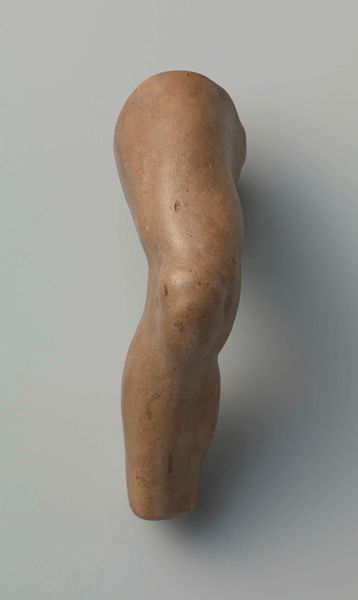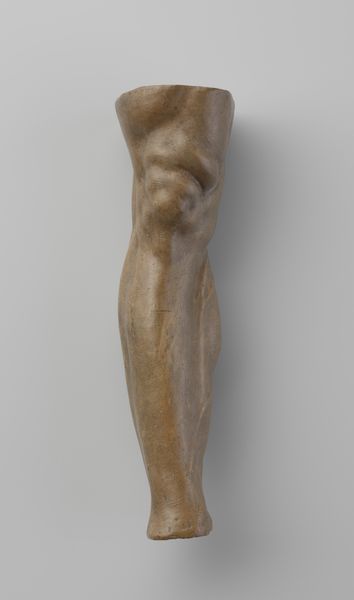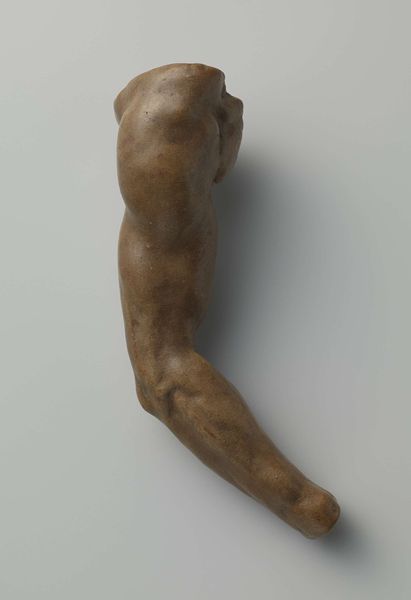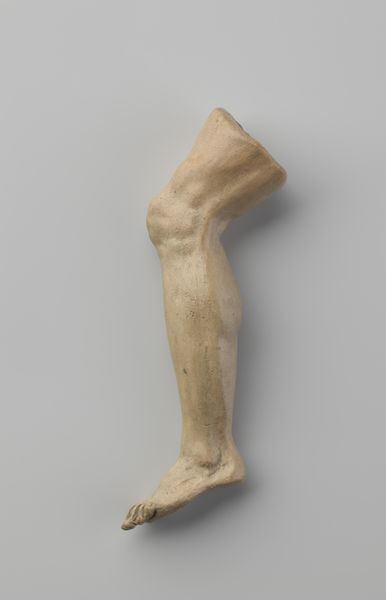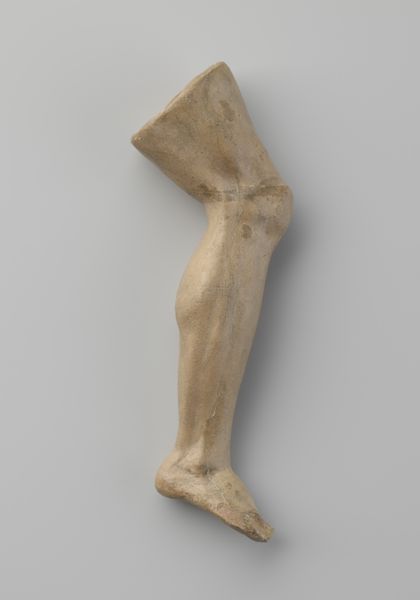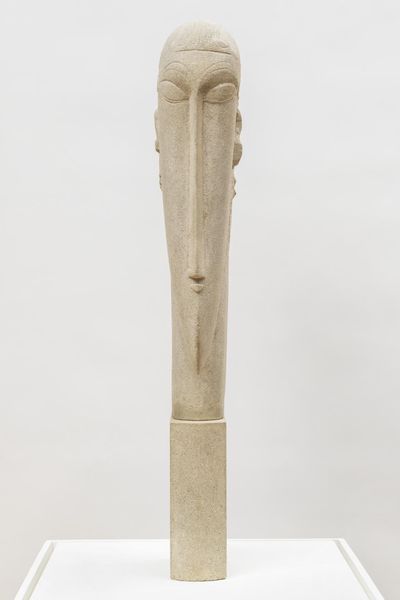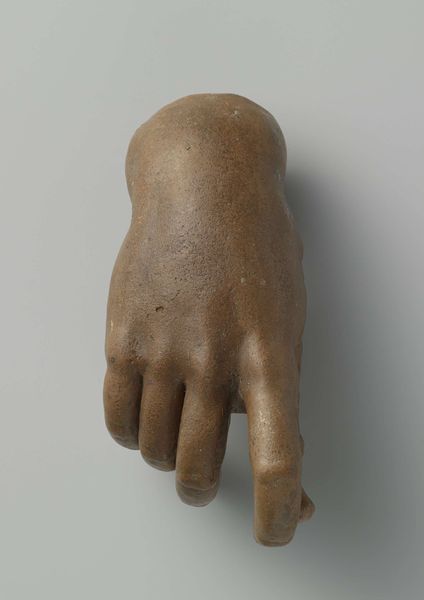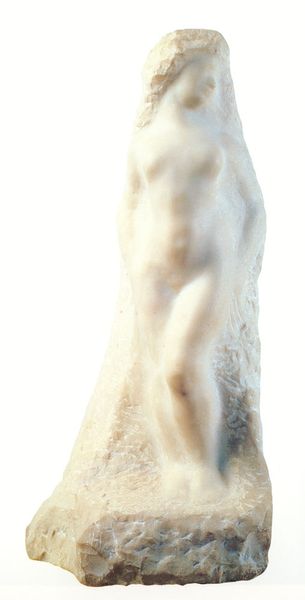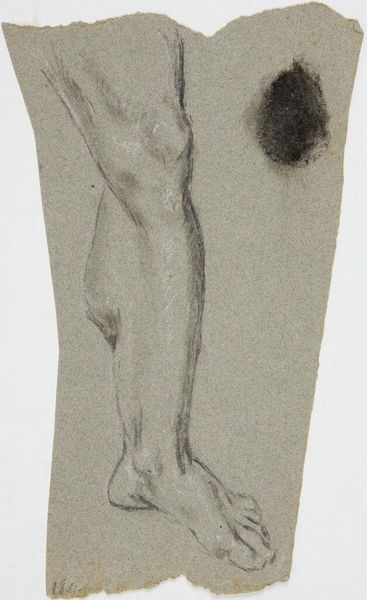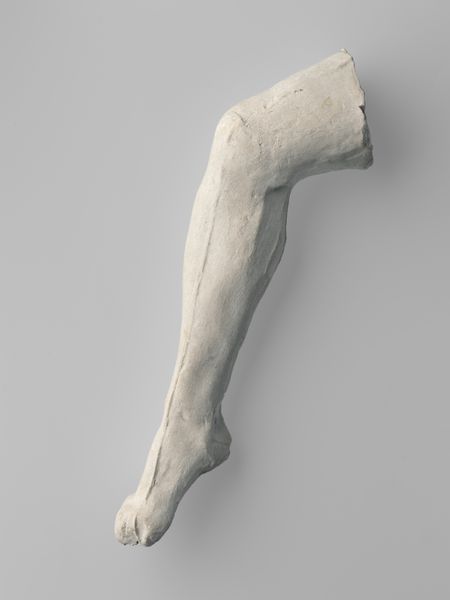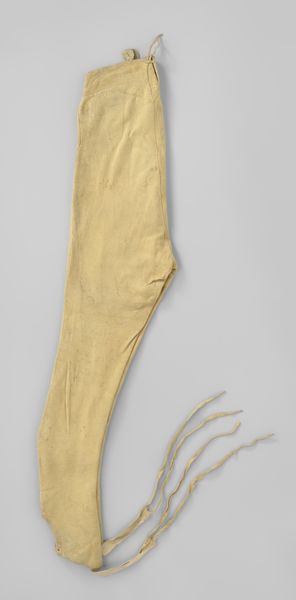
sculpture, terracotta
#
portrait
#
figuration
#
11_renaissance
#
stoneware
#
sculpture
#
terracotta
#
academic-art
Copyright: Rijks Museum: Open Domain
Curator: Looking at this sculptural study, the immediate impression is its sense of incompleteness. It's just the one leg. Editor: Yes, there's something vulnerable about its isolation, wouldn’t you say? The partial form highlights the body’s fragility, almost a medical specimen shorn of context. Curator: The Rijksmuseum houses this object, "Study Models of Parts of the Body", from circa 1560-1570, created by Johan Gregor van der Schardt. It’s crafted from terracotta, a common and accessible material during the Renaissance. Editor: It makes me think about class structures in art. Terracotta wasn’t marble. What level of access to artistic training did that dictate, I wonder, and how might that have impacted the artist's career? It also shows an interesting focus on a single part of the anatomy; how would this have served the educational purposes of the time? Curator: Consider how models like these enabled wider artistic production. This likely would have been produced in multiples allowing distribution among the workshop system. Studying form through multiples makes artwork more available to students, craftspeople, and possibly clients who might have required guidance on commissioning artwork with such complex and essential parts as legs. Editor: Precisely! Thinking about its social and cultural use offers fascinating layers. How it was made impacts who could use it, how it’s viewed, and the role of access in perpetuating artistic skill. What assumptions or expectations of ability would women face within this craft? Curator: And notice the smoothness achieved in this terracotta. The attention to surface finish highlights the mastery of the medium. This suggests high demand and potentially reveals market dynamics and consumer expectations during this time. Editor: Yes, and this one leg reminds me of the fetishized, disconnected object. It forces questions regarding how representation and labor, materiality, and intention coalesce within social histories. Curator: Exactly. We see a material choice enabling broad consumption for the reproduction and refinement of human forms within workshops and how materiality influenced production in quantity. Editor: Ultimately, seeing just one sculpted leg sparks wider conversations. It urges consideration not just about anatomical depiction but concerning how production reflects cultural frameworks and beliefs from this particular point in time. Curator: A very solid and stable platform to build on.
Comments
rijksmuseum about 2 years ago
⋮
This group of small models of parts of the body are carefully copied after famous sculptures, in particular by Michelangelo, in Florence and Rome. They came from the workshop of the Nijmegen sculptor Johan Gregor van der Schardt, who had a successful career in Italy, Nuremberg, and Copenhagen. They are extremely rare examples of the, in part autograph, study material of a 16th-century sculptor.
Join the conversation
Join millions of artists and users on Artera today and experience the ultimate creative platform.
